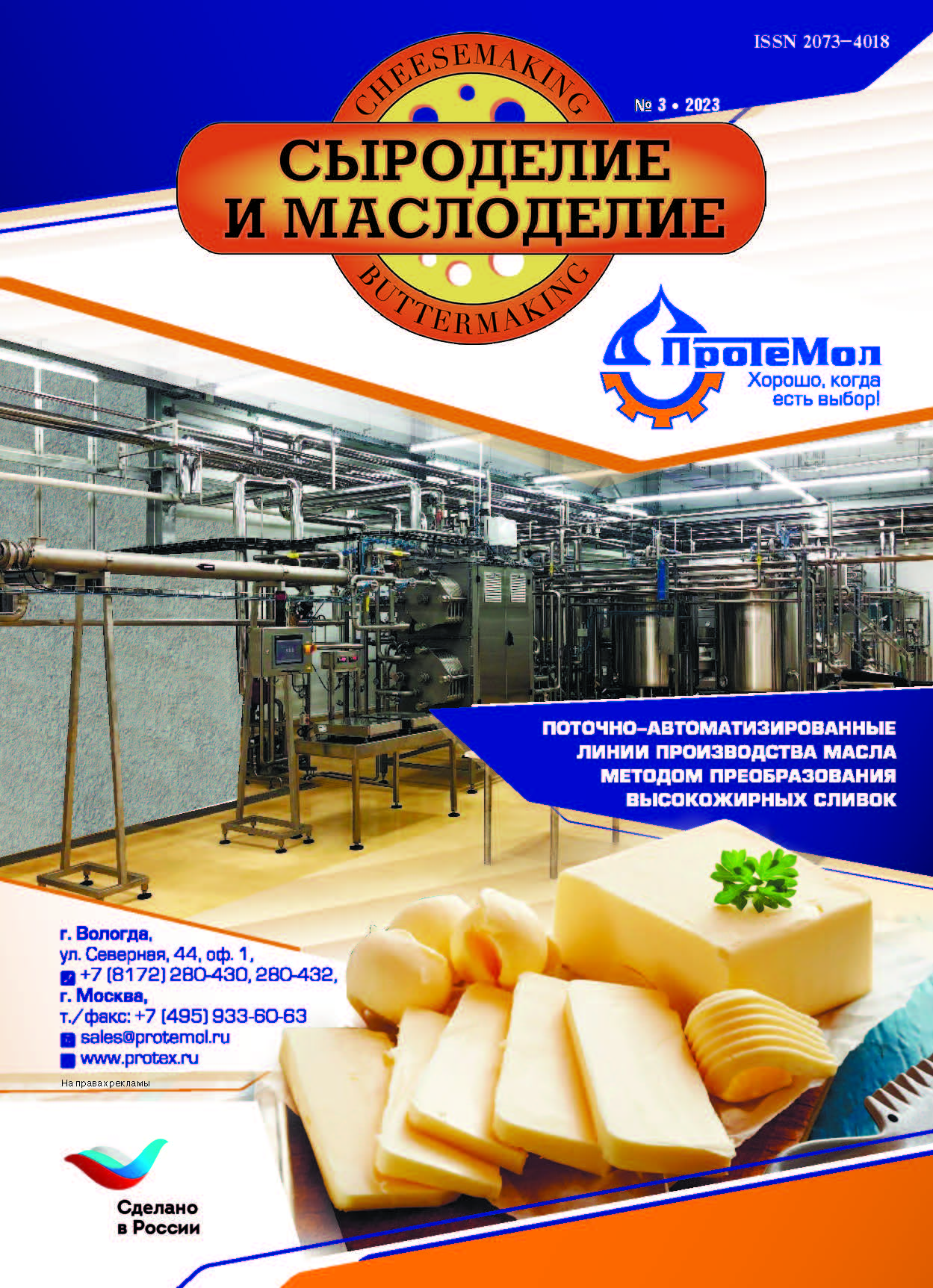Uglich, Russian Federation
Uglich, Russian Federation
The important role of the degree of maturity of cheeses used as part of a mixture of components for melting in the formation of the consistency of processed cheeses is noted. The biochemical aspects of cheese ripening are briefly considered, among which special attention is paid to enzymatic proteolysis. The importance of assessing the maturity of cheeses for making competent decisions when compiling compositions for chunky or spreadable processed cheeses is emphasized. Methods for assessing the maturity of cheeses by the degree of proteolysis and the buffer capacity of the water-soluble fraction are considered. The example of Dutch cheese shows the change in these indicators in the process of ripening. A close correlation was established between the results obtained by both methods (R=0.98±0.01), which indicates their interchangeability. It is noted that the method for measuring the buffer capacity of the water-soluble fraction of cheese is simpler to perform and allows obtaining results with the least time and effort compared to the method for determining the degree of proteolysis, which is based on the Kjeldahl method. It is concluded that it is preferable to use the method of measuring the buffer capacity of the water-soluble fraction of cheeses to assess their maturity in the laboratories of industrial enterprises for the production of processed cheeses.
processed cheeses, consistency, selection of raw materials, methods for assessing the maturity of cheeses
1. Lee, S. K. The influence of moisture content on the rheological properties of processed cheese spreads / S. K. Lee, S. Anema, H. Klostermeyer // International Journal of Food Science and Technology. 2004. № 39. R. 763-771.
2. Piska, I. Influence of cheese ripening and rate of cooling of the processed cheese mixture on rheological properties of processed cheese / I. Piska, J. Štětina // Journal of Food Engineering. 2004. V. 61. № 4. R. 551-555.
3. Lepilkina, O. V. Fermentativnyy proteoliz pri preobrazovanii moloka v syr / O. V. Lepilkina, A. I. Grigor'eva // Pischevye sistemy. 2023. T. 6. № 1. S. 36-45.
4. Ardö, Y. Evaluating proteolysis by analysing the N content of cheese fractions / Y. Ardö // Bulletin-International Dairy Federation. 1999. № 337. R. 4-9.
5. Inihov, G. S. Metody analiza moloka i molochnyh produktov / G. S. Inihov G. S., N. P. Brio. - M.: Pischevaya promyshlennost'. 1971. C. 59.
6. Zhebentyaev, A. I. Analiticheskaya himiya. Himicheskie metody analiza / A. I. Zhebentyaev, A. K. Zhernosek, I. E. Talut'. - M.: INFRA-M. 2014. S. 279.






